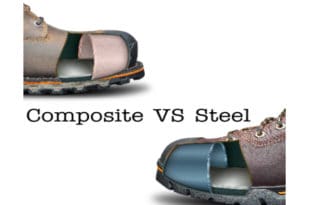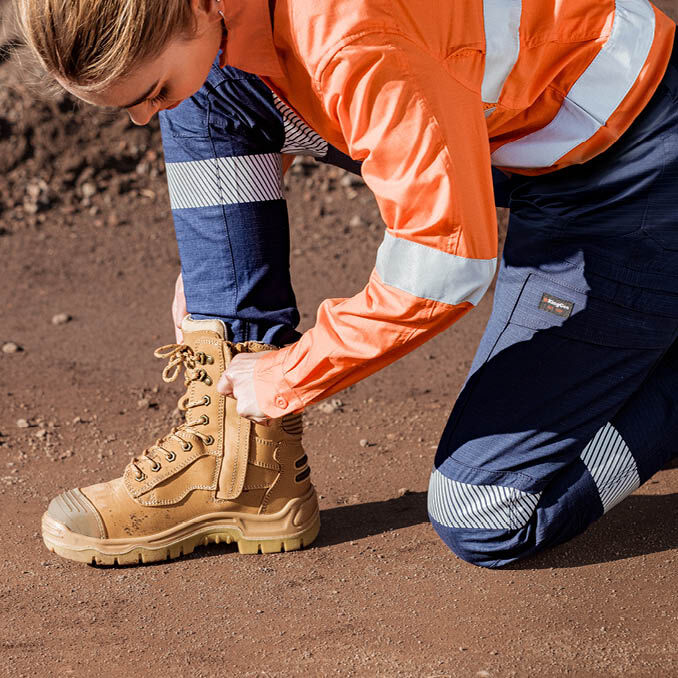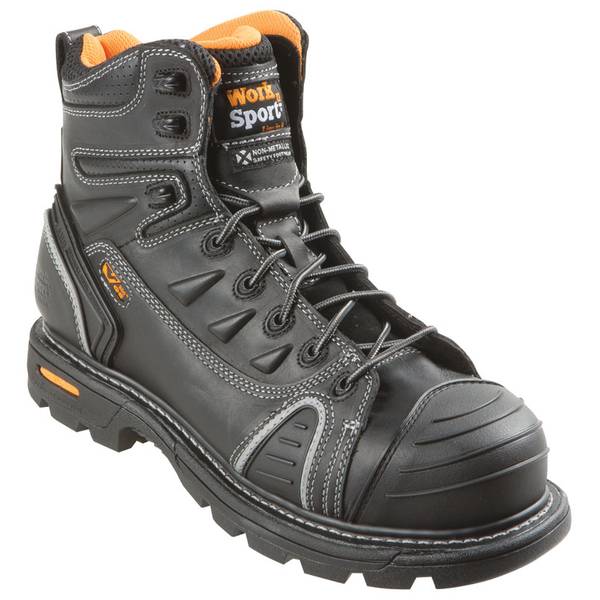Why Safety Shoes Matter in the Workplace
In hazardous work environments, the risk of foot injuries is ever-present. From heavy machinery to sharp objects, the potential for accidents is high. This is why safety shoes are a crucial component of personal protective equipment (PPE) in many industries. Steel toe or composite toe shoes, in particular, offer a high level of protection against crushing and puncture injuries. By wearing safety shoes, workers can significantly reduce the risk of foot injuries, which can have severe consequences, including permanent disability or even amputation. In fact, according to the Occupational Safety and Health Administration (OSHA), foot injuries are a leading cause of workplace accidents, resulting in thousands of injuries and fatalities each year. By prioritizing foot safety, employers and employees can create a safer, more productive work environment.
Steel Toe vs Composite Toe: What’s the Difference?
When it comes to protective footwear, two popular options stand out: steel toe and composite toe shoes. While both types of shoes offer excellent protection against foot injuries, they differ in terms of materials, weight, and protective capabilities. Steel toe shoes, made from sturdy steel, provide exceptional protection against heavy objects and compression. They are ideal for heavy-duty work environments, such as construction sites or manufacturing plants. On the other hand, composite toe shoes, made from advanced materials like carbon fiber or Kevlar, offer a lighter and more comfortable alternative. They provide equal protection to steel toe shoes but are better suited for workers who require greater mobility and flexibility. Understanding the differences between steel toe and composite toe shoes is crucial in choosing the right work boots for the job. By selecting the appropriate type of shoe, workers can ensure a safe and comfortable working experience.
How to Choose the Best Work Boots for Your Job
Selecting the right work boots for the job is crucial in ensuring foot safety and comfort. With so many options available, it can be overwhelming to choose the perfect pair. To make the process easier, consider the following factors: job requirements, personal comfort, and safety standards. For instance, workers in heavy-duty industries such as construction or manufacturing may require steel toe shoes for maximum protection, while those in lighter industries like warehousing or logistics may prefer composite toe shoes for their comfort and flexibility. Additionally, consider the terrain and environment in which you will be working. Will you be working on uneven surfaces or in wet conditions? Look for boots with slip-resistant soles and waterproofing features. By taking these factors into account, you can find a pair of work boots that not only meets safety standards but also provides comfort and support throughout the workday. Whether you opt for steel toe or composite toe shoes, the right work boots can make all the difference in preventing foot injuries and ensuring a safe working environment.
Top-Rated Steel Toe Shoes for Heavy-Duty Work
When it comes to heavy-duty work, steel toe shoes are the go-to choice for many workers. With their exceptional protection and durability, they are ideal for industries such as construction, manufacturing, and warehousing. Here are some top-rated steel toe shoes from reputable brands, highlighting their features, pros, and cons:
The Timberland PRO Boondock Steel Toe Work Boot is a popular choice among workers, offering a rugged outsole and a comfortable, breathable upper. The Dr. Martens Ironbridge Steel Toe Work Boot is another top pick, featuring a slip-resistant sole and a durable, water-resistant upper. The Thorogood American Made Steel Toe Work Boot is a great option for those looking for a made-in-USA product, with a rugged outsole and a comfortable, cushioned insole.
When selecting a steel toe shoe for heavy-duty work, consider the following factors: the type of job, the terrain, and the level of protection required. Steel toe shoes are available in a range of styles, from boots to shoes, and offer varying levels of protection, from basic to advanced. By choosing the right steel toe shoe for the job, workers can ensure a safe and comfortable working experience. Whether you opt for a rugged boot or a lightweight shoe, steel toe shoes are an essential component of any heavy-duty work outfit.
Composite Toe Shoes: A Lightweight Alternative
While steel toe shoes are a popular choice for heavy-duty work, composite toe shoes offer a lightweight alternative that doesn’t compromise on protection. Made from advanced materials such as carbon fiber, Kevlar, and fiberglass, composite toe shoes provide equal protection to steel toe shoes but with a significant reduction in weight. This makes them ideal for workers who require protection without the added bulk.
One of the key benefits of composite toe shoes is their improved comfort. Without the heavy metal toe cap, composite toe shoes are often more comfortable to wear, making them perfect for workers who are on their feet all day. Additionally, composite toe shoes are often more breathable, allowing for better airflow and reducing the risk of foot sweat and odor.
Popular brands such as New Balance, Reebok, and Magnum offer a range of composite toe shoes that cater to different occupations and preferences. The New Balance 627v2 Composite Toe Work Shoe, for example, features a lightweight and breathable upper, while the Reebok Work RB4444 Composite Toe Work Boot offers a rugged outsole and a comfortable, cushioned insole. The Magnum Steel-Lite Composite Toe Work Boot is another top pick, featuring a lightweight and flexible design that makes it perfect for workers who require protection without the added weight.
When choosing a composite toe shoe, consider the level of protection required, the terrain, and personal comfort. While they may not be suitable for the most heavy-duty work, composite toe shoes offer a lightweight and comfortable alternative that doesn’t compromise on protection. Whether you opt for a shoe or a boot, composite toe shoes are a great option for workers who require protection without the added bulk of steel toe shoes.
What to Look for in a Comfortable and Safe Work Boot
When it comes to choosing a work boot, comfort and safety are two essential factors to consider. A comfortable work boot can make all the difference in a worker’s productivity and overall well-being, while a safe work boot can prevent injuries and accidents. Here are some key features to look for in a comfortable and safe work boot:
Cushioning is a crucial aspect of a comfortable work boot. Look for boots with thick, responsive midsoles that absorb shock and provide support. Arch support is another essential feature, as it helps to reduce fatigue and prevent injuries. Breathability is also important, as it helps to keep feet cool and dry in hot and humid environments.
In terms of safety, consider the type of protection required for the job. Steel toe or composite toe shoes are essential for heavy-duty work, while slip-resistant soles are vital for workers who work on slippery surfaces. Ankle support is also important, as it helps to prevent twists and sprains. Look for boots with high-quality materials, such as full-grain leather, and robust construction that can withstand the demands of the job.
Other features to consider include adjustable lacing systems, padded collars, and removable insoles. These features can help to customize the fit and provide additional comfort and support. When trying on work boots, make sure to wear the same type of socks you plan to wear on the job and walk around to ensure a comfortable fit.
By considering these key features, workers can find a comfortable and safe work boot that meets their needs and helps them to perform at their best. Whether you opt for a steel toe or composite toe shoe, prioritizing comfort and safety can make all the difference in a worker’s overall well-being and job satisfaction.
Breaking In Your New Work Boots: Tips and Tricks
Breaking in a new pair of work boots can be a daunting task, but with the right strategies, it can be a painless process. Whether you’re wearing steel toe or composite toe shoes, breaking them in properly is essential to ensure a comfortable fit and prevent discomfort and blisters.
One of the most effective ways to break in new work boots is to wear them for short periods of time and gradually increase the duration. Start by wearing them for a few hours a day and gradually increase the time over the next few days. This will allow your feet to adjust to the new boots and reduce the risk of discomfort and blisters.
Another tip is to wear thick socks when breaking in your new work boots. This will help to reduce friction and prevent blisters. You can also apply a small amount of foot powder or talcum powder to your feet to reduce moisture and prevent blisters.
It’s also important to walk around and move your feet when breaking in your new work boots. This will help to loosen up the materials and mold the boots to your feet. Avoid standing in one place for too long, as this can cause discomfort and fatigue.
In addition, consider using a shoe stretcher or boot tree to help maintain the shape of your boots and prevent creasing. This can also help to reduce the risk of blisters and discomfort.
By following these tips and tricks, you can break in your new work boots quickly and easily, ensuring a comfortable fit and preventing discomfort and blisters. Whether you’re wearing steel toe or composite toe shoes, breaking them in properly is essential to ensure a safe and comfortable working experience.
Conclusion: Prioritizing Foot Safety in the Workplace
In conclusion, wearing safety shoes in the workplace is crucial to prevent foot injuries and ensure a safe working environment. With the right work boots, employees can reduce the risk of accidents and injuries, improving overall job satisfaction and productivity. Whether opting for steel toe or composite toe shoes, it’s essential to choose the right work boots for the job, considering factors such as job requirements, personal comfort, and safety standards.
By prioritizing foot safety, employers can demonstrate their commitment to employee well-being and create a positive work environment. Moreover, investing in high-quality work boots can reduce the financial burden of workplace accidents and injuries, ultimately benefiting the organization as a whole.
In today’s workplace, there is no excuse for neglecting foot safety. With the wide range of steel toe and composite toe shoes available, there is a perfect pair of work boots for every occupation. By following the tips and guidelines outlined in this article, employees and employers can work together to create a safer, more comfortable work environment.
Remember, foot safety is not just a priority, it’s a necessity. By choosing the right work boots and prioritizing foot safety, we can reduce the risk of accidents and injuries, improve job satisfaction, and create a better working environment for everyone.







